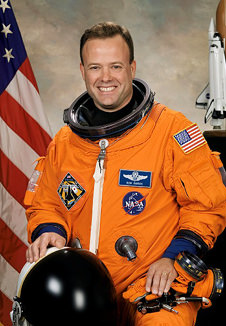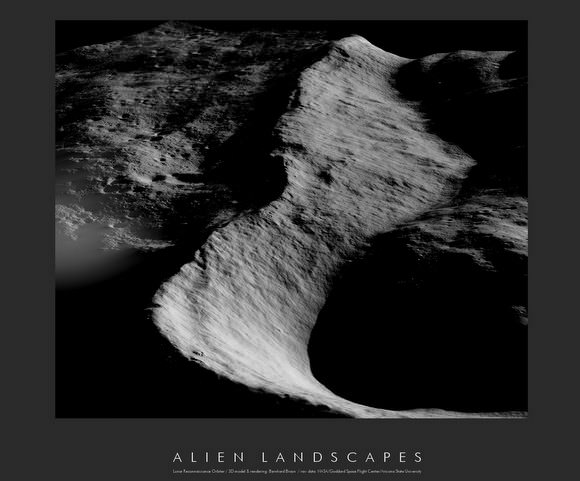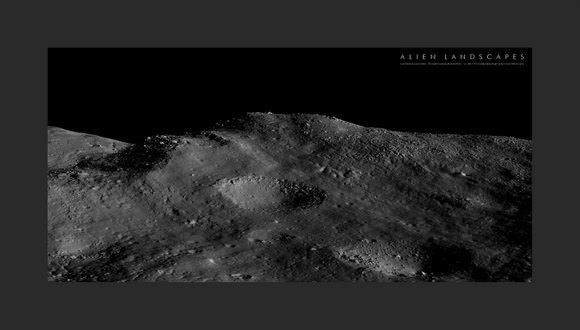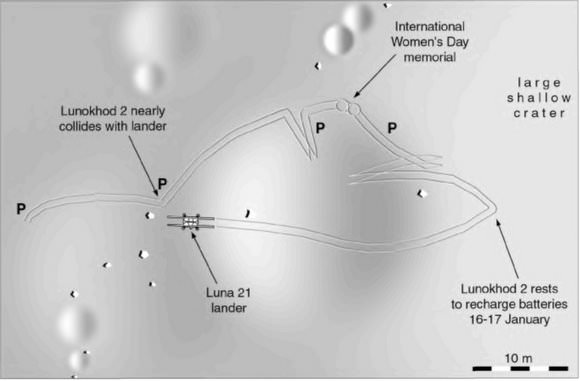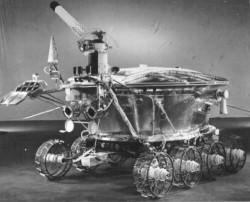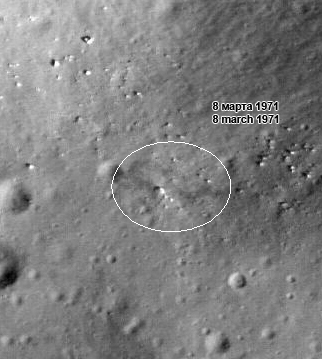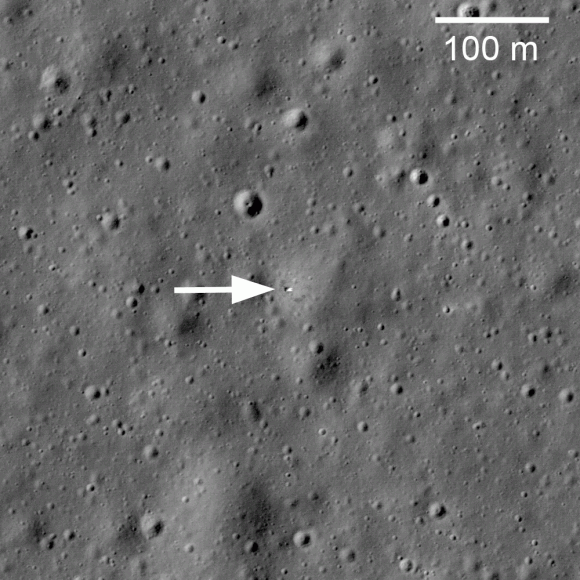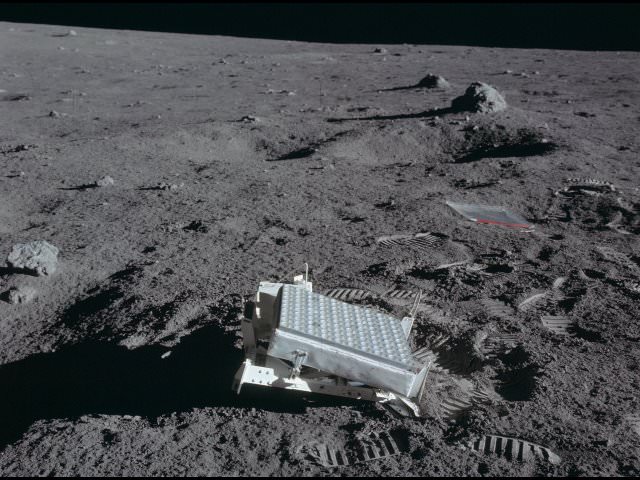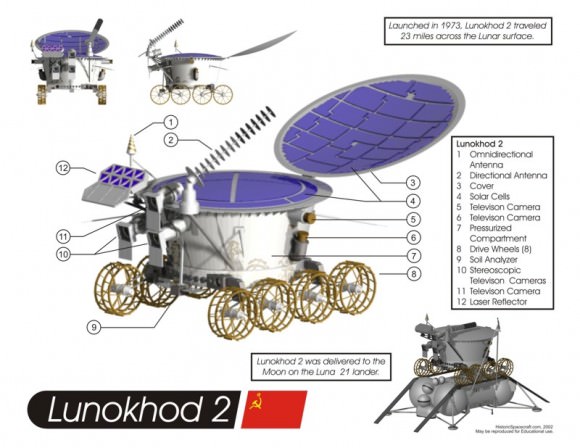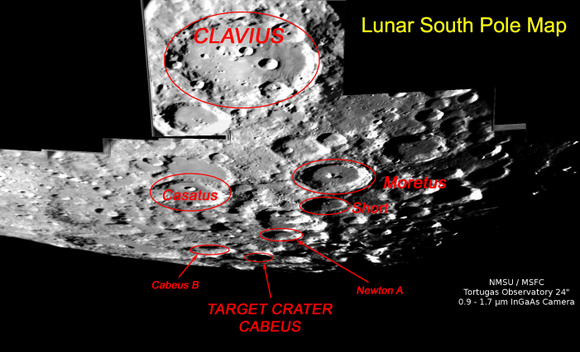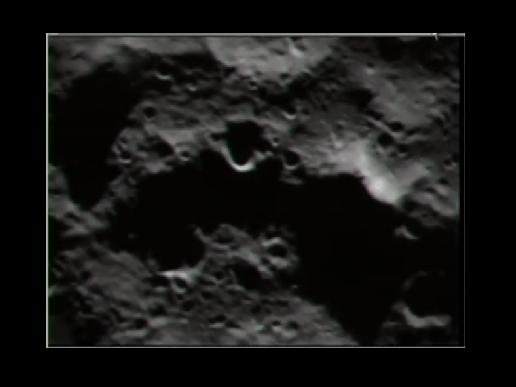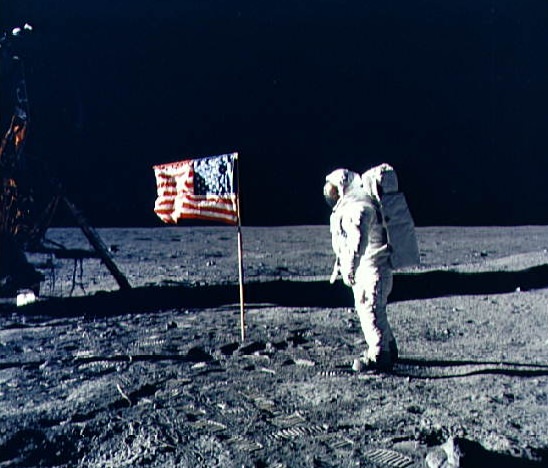[/caption]
The debate on why humans should or should not return to the Moon has been ongoing for years. Two weeks ago, I had the opportunity to hear astronaut Ron Garan speak eloquently on a subject he is passionate about, water sustainability on planet Earth. Subsequently, I read an essay Garan wrote about the importance of returning to the Moon. Although Garan originally wrote this essay before the cancellation of the Constellation program was announced, he has amended his thoughts to reflect the likelihood that the US won’t be returning to the Moon anytime soon. With Garan’s permission, we are re-publishing his essay in its entirety.
The Importance of Returning to the Moon
(The 8th Continent)
By Ron Garan
NASA Astronaut
On May 10th, 1869, a golden spike joined two railways at Promontory Point, Utah, and the first transcontinental railroad was completed. On January 14th, 2004, a new vision for our Nation’s space exploration program was announced that committed the United States to a long-term human program to explore the solar system starting with a return to the moon. On February 1st 2010, those plans to return to the moon were put on hold. Although our Nation has decided to postpone a return to the moon it is still important to acknowledge the moon’s relevance to life on Earth.
There is no doubt that the railroad changed the world. It opened up frontiers to discovery, settlement, and commerce. The railroad was the backbone for the industrial revolution that provided the largest increase in life expectancy and improvement in quality of life in history. Just as the industrial revolution brought about unprecedented improvements in quality of life so can a new age of space exploration and development, but this time with a positive impact on the environment. To begin a period of sustainable space exploration, both the public and private sectors of our Nation must seize the opportunity and continue on a path to the moon.
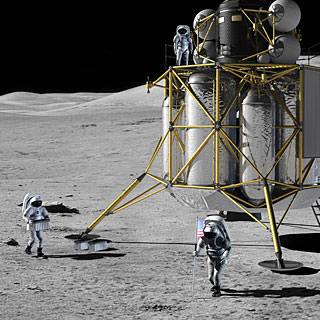
Since the Vision for Space Exploration was announced in 2004, there has been an on-going debate about the importance of taking the next step in space exploration, a return to the moon. The reasons for making this the next step include: fulfilling a compelling human need to explore; gaining a foothold on the moon to prepare for journeys to other worlds; easing the world’s energy problems; protecting the planet from disasters; creating moon-based commercial enterprises that will improve life on Earth, conducting scientific research; inspiring young people toward higher education, and utilizing space resources to help spread prosperity throughout the world.
We should not return to the moon for any one of these reasons, but for all of them and more. By first establishing the basic infrastructure for a transportation system between the Earth and the moon and a sustainable, semi-autonomous, permanent human settlement, we will open the door to significant benefits for all. Of course, any permanent lunar base must be economically and politically sustainable and therefore must provide tangible benefits and a return on investment.

Exploration: Great nations accomplish extraordinary endeavors that help to maintain their leadership in the world. America’s history is built on a desire to open new frontiers and to seek new discoveries. NASA’s vision for space exploration acknowledges that, “Mankind is drawn to the heavens for the same reason we were once drawn into unknown lands and across the open sea. We choose to explore space because doing so improves our lives and lifts our national spirit.”
.
Establishing a lunar infrastructure will challenge us to improve the reliability of space transportation and allow us to demonstrate exploration systems and concepts without leaving the relative safety of near-Earth space. Testing systems and concepts at a location that’s a three-day journey from Earth is a logical step before we make the leap of a six-month journey to Mars. Establishing a permanently occupied lunar base also will open the way to detailed study and use of lunar resources, which likely are significantly more economical than lifting all required exploration resources from the Earth’s surface.
Energy: Today, about 1.6 billion people on the Earth don’t have access to electricity. The World Bank estimates that 1.1 billion people live in extreme poverty which leads to 8 million premature deaths every year. In developed countries, higher quality of life is achieved only through a high rate of energy use. Increased energy supply is needed for economic and social development, improved quality of life, and to grow enough food to provide for the citizens of the developing world.
Unless something is done soon, the world will be faced with a crisis of enormous proportions. The United Nations estimates that world population will be approximately 9.1 billion by 2050 with virtually all growth in the 50 poorest countries. The choices that the global society makes to provide for future energy needs will have a profound effect on humanity and the environment.
The moon can supplement Earth-based renewable energy systems to meet future energy demand. Ample energy from the Sun reaches the moon and is not interrupted by weather, pollution or volcanic ash. Solar energy farms on the moon can “beam” limitless clean energy down to where it is needed on Earth or to satellites for relay to the Earth. There are also other potential sources of energy including platinum for fuel cells and an isotope called helium-3, which could be used in fusion reactors of the future.
Supplying energy from the moon will enable us to help provide the Earth’s energy needs without destroying our environment.
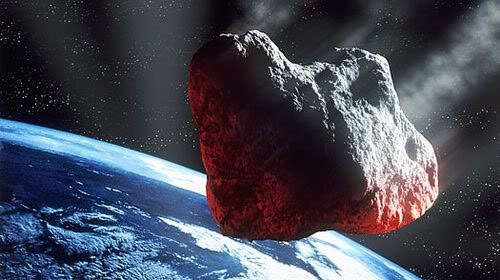
Protect the Planet from Disasters: There is a real risk to the Earth’s inhabitants from asteroid impacts and super-volcano eruptions. If a large object the size of Comet Shoemaker-Levy 9 that recently slammed into Jupiter were to hit the Earth, civilization could be destroyed. Much smaller asteroids could cause tremendous damage and loss of life. The moon is a superb location for early detection systems.
A super-volcano eruption is a geologic event of enormous explosive power to affect the global climate for years. Scientists estimate the last such eruption happened 74,000 years ago, and was 10,000 times more powerful than Mount St. Helens. Tremendous amounts of rock and ash were ejected into the air causing a six year long volcanic winter and a 1,000-year instant Ice Age, massive deforestation, disastrous famine, and near extinction of humankind. Scientists estimate that such a super-eruption will occur about once every 100,000 years.
The systems and technology that will be developed for life and work on the moon can be used to develop habitats and systems that could preserve Earth’s inhabitants in the event of a devastating eruption. These systems will also improve our ability to live in extreme environments and can be used to learn how to overcome limited resources and other environmental issues.
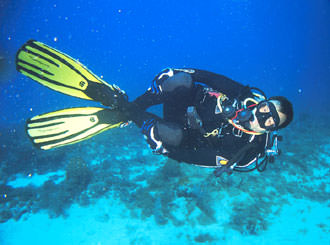
Moon-Based Commercial Enterprises: When the early pioneers headed west and expanded our Nation, they did not carry everything with them that they would need for their journey. They “lived off the land” and we will also need to use those resources available to us along our journey, starting with the moon.
There are numerous moon-based commercial activities that could significantly offset the cost of a moon base. Just a few of these are lunar refueling or servicing stations for satellites, lunar mining and space tourism. These commercial activities would allow us to return national treasures from space and provide a significant return on our space investment.
Scientific research: The moon offers an incredible opportunity to further human understanding and discovery. Since the moon’s ancient surface is relatively undisturbed, study of its geology can help us better understand the geological history of Earth. Further, the moon’s vacuum environment can’t be duplicated on the Earth or in low-Earth orbit, and could lead to new materials, advanced alloys, medicines and innovative ways to deal with limited resources on Earth. Radio telescopes on the far side of the moon would be shielded from all radio signals (noise pollution) from Earth, allowing tremendous sensitivity increases and telescopes pointed at the Earth could identify and predict weather and climate changes.
If we return to the moon just for science and exploration then activities will be limited by the amount of money our nation is willing to devote. But, if we establish a sustainable, economically viable lunar base then our science and exploration will be limited only by our imagination.
Education: Our children are our best investment for the future, and our space program is a tremendous motivator. Our Nation has seen a steady decline in the number of students studying math and science. The space program can help turn this trend around. I can personally attest to the ability of the space program to encourage students based on the fact that I enrolled in math and science courses and began the pursuit of an engineering degree the day after the first space shuttle mission landed. The creation of a permanent lunar base will inspire millions of young people toward higher education and help maintain our Nation’s technological leadership.

Resources and Other Benefits: Since we live in a world of finite resources and the global population continues to grow, at some point the human race must utilize resources from space in order to survive. We are already constrained by our limited resources, and the decisions we make today will have a profound affect on the future of humanity.
Using resources and energy from space will enable continued growth and the spread of prosperity to the developing world without destroying our planet. Our minimal investment in space exploration (less than 1 percent of the U.S. budget) reaps tremendous intangible benefits in almost every aspect of society, from technology development to high-tech jobs. When we reach the point of sustainable space operations we will be able to transform the world from a place where nations quarrel over scarce resources to one where the basic needs of all people are met and we unite in the common adventure of exploration. The first step is a sustainable permanent human lunar settlement.

How should we go about this important undertaking? A good analogy to look at is the U.S. railroad system. The greatest obstacle for the first railroad developers was financial risk. Purchasing right of way, paying wages for large workforces and buying materials and equipment were prohibitively expensive. But the federal government stepped in, orchestrating massive land grants and other incentives. Once initial government investment was assured, enterprising developers invested enormous sums to bridge vast valleys and tunnel through enormous mountains.
Today we are faced with similar obstacles in the development and use of space for the benefit of humanity. Potential space developers face enormous up-front costs for high-risk, long-term returns on investment. To capitalize on the tremendous moon-based opportunities, our nation should establish the basic infrastructure for a transportation system between the Earth and the moon and a sustainable human settlement on the moon. Once this initial investment is made, commercial revenue-generating activities can be established. Just as our investment in the railroad, interstate road system, hydro-electric dams and other large federal projects have been paid back many times over by increased productivity and quality of life, so will our investment in lunar infrastructure.
We are poised on the doorstep of an incredible opportunity to benefit all of humanity. We have the technology and the ability to make this a reality — we need only the will to see it through. We need to choose a course toward the utilization of space to increase our available resources, global prosperity, quality of life, technological advancement, and environmental stewardship. Just as we look back and thank those before us for developing things most of us take for granted such as railroads and highways, the generations to come should be able to look back and thank us for committing to sustainable space exploration.

